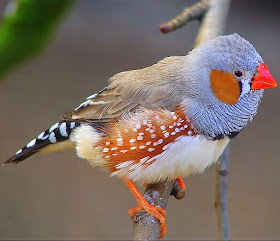Heliactin bilophus
 |
| Photo by Arthur Grosset (Arthur Grosset's Birds) |
Common name:
horned sungem (en); chifre-de-ouro (pt); colibri aux huppes d'or (fr); colibrí cornudito (es); goldhauben-schmuckkolibri (de)
Taxonomy:
Order Apodiformes
Family Trochilidae
Range:
This species is found in the southern half of Brazil and marginally across the border into Bolivia, and there is a disjunct population in northern Brazil and Surinam.
Size:
These birds are 8-10 cm long and weigh 2-2,5 g.
Habitat:
Horned sungems are found in dry savannas, dry grasslands, open forests, forest edges and rural gardens. They are present from sea level up to an altitude of 1.000 m.
Diet:
They feed on the nectar of various plants, namely Caesalpinoideae, Vochysiaceae and Asteraceae. They also eat small insects.
Breeding:
These birds nest in a small cup made of soft plant material and cobweb, usually placed in a fork of a small scrub, 1 m above ground. The female lays 2 eggs which she incubates alone for 12-13 days. The chicks fledge 20-23 days after hatching.
Conservation:
IUCN status - LC (Least Concern)
This species has a very large breeding range and is described as uncommon. The species is suspected to be increasing since it readily adapts to man-made habitats such as gardens and cultivated areas. It is believed to be expanding northwards, probably due to deforestation.


















